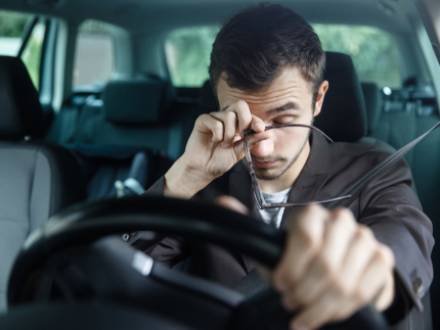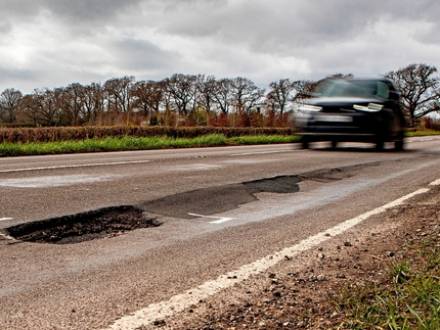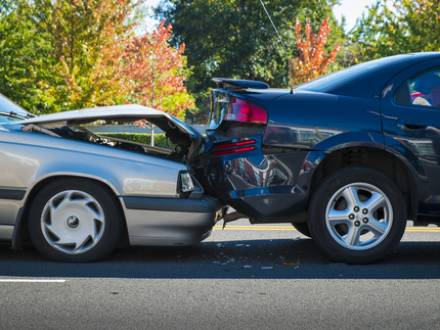Recent Blog Posts
How Can I Prove Someone Merged Into My Lane and Caused a Crash?
 Car accidents caused by one vehicle merging into another vehicle are common on busy Illinois roads. This is especially true in high-traffic areas like Park Ridge and the surrounding suburbs. But proving that another driver merged into your lane and caused the crash can be difficult, especially if the other driver says you were at fault.
Car accidents caused by one vehicle merging into another vehicle are common on busy Illinois roads. This is especially true in high-traffic areas like Park Ridge and the surrounding suburbs. But proving that another driver merged into your lane and caused the crash can be difficult, especially if the other driver says you were at fault.
If you were injured in a lane-change accident in 2025, you may be entitled to compensation. The key to a successful claim is having the right evidence. An experienced Des Plaines, IL car accident lawyer can help you build a strong case to prove the other driver’s fault.
When Do You Have the Right of Way in a Lane Change?
Illinois traffic laws require all drivers to stay in their lane and only change lanes when it is safe. Under 625 ILCS 5/11-709, a driver must stay in a single lane "as nearly as practicable" and cannot move into another lane until the move can be made safely.
Recent Head-On Crashes on Illinois Highways Cause Serious Injuries and Death
 On June 25, 2025, a car traveling southbound on the northbound side of I-294 in Glenview caused a fatal head-on crash. On August 4, another person was hospitalized after a serious head-on crash on I-90 in Illinois. These large, busy highways are dangerous, and head-on crashes at high speeds frequently leave drivers and passengers badly injured or worse.
On June 25, 2025, a car traveling southbound on the northbound side of I-294 in Glenview caused a fatal head-on crash. On August 4, another person was hospitalized after a serious head-on crash on I-90 in Illinois. These large, busy highways are dangerous, and head-on crashes at high speeds frequently leave drivers and passengers badly injured or worse.
These accidents are often caused when a driver under the influence of drugs or alcohol is so impaired that they get on the highway going the wrong way. If you or someone you love has been injured in a head-on crash on an Illinois highway, you may be entitled to compensation from the person who caused the accident. Our Glenview, IL car crash injury attorney takes these cases seriously and fights hard for our clients to get the justice they deserve.
What to Do When Your Spouse is Killed in a Car Accident
 Losing a spouse in a car accident is the kind of sudden tragedy that keeps many of us awake at night. When it happens to you, you may initially be in disbelief. Figuring out what to do next can feel impossible. Even once you begin to accept what happened, grief can make it hard to think about your own needs.
Losing a spouse in a car accident is the kind of sudden tragedy that keeps many of us awake at night. When it happens to you, you may initially be in disbelief. Figuring out what to do next can feel impossible. Even once you begin to accept what happened, grief can make it hard to think about your own needs.
If this sounds like you, you should talk to a Park Ridge personal injury lawyer with Quinn Law Group, LLC. We have helped many people recover after losing a loved one to a car accident, and we appreciate the gravity of these cases. Attorney Quinn handles each case personally, providing support and guidance through this difficult time. Plus, we offer free consultations so you take no risk by talking to us.
What Should I Do First After Losing My Spouse in a Fatal Accident?
Serious car crashes are scenes of confusion and chaos. If you or other family members are injured, the first thing you need to do is get medical attention right away, even if you already left the crash site. Injuries are not always immediately apparent, and a medical evaluation can provide necessary proof of harm.
What Happens When an Hours of Service Violation Causes a Truck Crash?
 To reduce fatigue-related truck crashes, the Federal Motor Carrier Safety Administration (FMCSA) sets rules known as Hours of Service (HOS). These rules limit how many hours truckers can drive before they are obligated to rest. Unfortunately, some drivers and companies break these rules, putting everyone on the road at risk.
To reduce fatigue-related truck crashes, the Federal Motor Carrier Safety Administration (FMCSA) sets rules known as Hours of Service (HOS). These rules limit how many hours truckers can drive before they are obligated to rest. Unfortunately, some drivers and companies break these rules, putting everyone on the road at risk.
If you were hurt in a truck accident, there might have been an HOS violation. Speak to a Glenview, IL personal injury lawyer about how to prove this in your injury claim so you can hold the trucking company accountable.
What Does "Hours of Service" Mean?
Under FMCSA regulations, truck drivers must follow strict limits on driving and rest periods. For example, most drivers cannot drive more than 11 hours after 10 hours off duty, and they must take at least a 30-minute break after eight hours on the road. They also cannot exceed 60 hours of driving in seven days or 70 hours of driving in eight days.
How Do You Prove a Driver Was Drowsy in an Illinois Car Accident Case?
 If you were involved in a car accident that was caused by a driver who fell asleep at the wheel, it is natural to want that driver to pay for your medical bills and lost income. However, it is not typically an easy task to prove that another driver was tired and that this caused your accident. Challenging as it may be, proving driver fatigue is possible with strong evidence. For help understanding how, contact a Des Plaines, IL personal injury lawyer.
If you were involved in a car accident that was caused by a driver who fell asleep at the wheel, it is natural to want that driver to pay for your medical bills and lost income. However, it is not typically an easy task to prove that another driver was tired and that this caused your accident. Challenging as it may be, proving driver fatigue is possible with strong evidence. For help understanding how, contact a Des Plaines, IL personal injury lawyer.
How Can You Prove That a Tired Driver Caused a Crash?
Unlike intoxication, which can be confirmed with a breath test, drowsiness is not something that can be proved by any specific test. Most drivers will not admit that they fell asleep at the wheel or were too tired to drive safely. That means accident victims and their attorneys typically need to gather multiple forms of evidence to show that fatigue played a role in the crash.
Can I Still Sue for an Accident if I Was Speeding?
 After a serious car accident, many drivers worry that they will not be able to recover damages if they were speeding at the time of the crash. While speeding can complicate a case, Illinois law does not automatically bar recovery just because you were going over the speed limit. The real issue is whether your actions were the primary cause of the accident. In many cases, even when a driver is partially responsible, they may still be entitled to significant compensation.
After a serious car accident, many drivers worry that they will not be able to recover damages if they were speeding at the time of the crash. While speeding can complicate a case, Illinois law does not automatically bar recovery just because you were going over the speed limit. The real issue is whether your actions were the primary cause of the accident. In many cases, even when a driver is partially responsible, they may still be entitled to significant compensation.
If you have been hurt in an accident, talk to a Park Ridge personal injury lawyer. You may be surprised to learn about your options – but you will not know unless you ask.
What Does Comparative Negligence Mean in Illinois?
As of August 2025, Illinois continues to follow the modified comparative negligence rule under 735 ILCS 5/2-1116. This law allows an injured person to recover damages if they were not more than 50 percent responsible for the accident.
Can I Sue the City if a Pothole Caused a Car Accident in Illinois?
 Potholes are a common hazard on Illinois roads with harsh winters and heavy traffic. Drivers across the state know how damaging these craters can be, not only to vehicles but also to driver safety. If you were injured in an accident caused by a pothole, you may be wondering whether there is anyone you can hold accountable. An experienced Des Plaines, IL personal injury lawyer can help you review your case and explain your options.
Potholes are a common hazard on Illinois roads with harsh winters and heavy traffic. Drivers across the state know how damaging these craters can be, not only to vehicles but also to driver safety. If you were injured in an accident caused by a pothole, you may be wondering whether there is anyone you can hold accountable. An experienced Des Plaines, IL personal injury lawyer can help you review your case and explain your options.
Who Is Responsible for Fixing Potholes in Illinois?
The agency responsible for repairing potholes depends on where the accident happened. The Illinois Department of Transportation (IDOT) maintains state highways and interstates, counties handle county roads, and cities, villages, or townships repair local streets. If a government agency knew or should have known about a dangerous pothole and failed to repair it within a reasonable time, you may be able to hold it liable for an accident it caused.
What to Do if a Speeding Driver Rear-Ends You in Illinois
 A rear-end crash happens in a split second, but the physical, financial, and emotional consequences last much longer. While being crashed into from behind can always be dangerous, if the driver who hit you was speeding, the risks of serious injuries and vehicle damage are even higher. In Illinois, the law protects people who are hurt by negligent drivers, and speeding is one of the clearest forms of negligence on the road.
A rear-end crash happens in a split second, but the physical, financial, and emotional consequences last much longer. While being crashed into from behind can always be dangerous, if the driver who hit you was speeding, the risks of serious injuries and vehicle damage are even higher. In Illinois, the law protects people who are hurt by negligent drivers, and speeding is one of the clearest forms of negligence on the road.
If you were rear-ended by a speeding driver, you may be able to recover compensation for your injuries, vehicle repairs, lost income, and pain and suffering by filing a personal injury claim. Knowing what to expect after the crash can help you take the right steps to protect your health and your legal rights. A qualified Glenview, IL car accident lawyer can help you make informed decisions that best suit you.
Who Is Liable If a Falling Object Injures Me on the Road?
 You are driving through Illinois minding your own business when something unexpected happens: An object crashes onto your car from above. Whether it is debris from a passing truck, a tool dropped from an overpass, or cargo that fell off another vehicle, it can be terrifying and lead to serious injuries. You might soon find yourself asking who is responsible for your injuries, medical bills, or vehicle damage.
You are driving through Illinois minding your own business when something unexpected happens: An object crashes onto your car from above. Whether it is debris from a passing truck, a tool dropped from an overpass, or cargo that fell off another vehicle, it can be terrifying and lead to serious injuries. You might soon find yourself asking who is responsible for your injuries, medical bills, or vehicle damage.
In Illinois, several parties could be held liable for a falling object accident, depending on how and why it happened. If you were injured, you may have a valid personal injury claim. Speak with a qualified Park Ridge, IL personal injury attorney for help protecting your rights and uncovering who should be held accountable.
What Are Common Sources of Falling Object Accidents?
Falling object incidents on Illinois roads are more common than most people realize. They can be caused by many things, including:
Why Do I Need a Lawyer to Deal With Insurers After an Accident?
 Whether you were injured in a motor vehicle accident, premises liability incident, construction accident, by a defective product, or through medical malpractice, you may be entitled to compensation. Insurance companies have teams of lawyers and trained adjusters whose goal is to protect the company’s profit margins. They sometimes accomplish that goal by not paying fair amounts for claims. Handling insurance claims on your own can lead to mistakes that reduce or eliminate your compensation.
Whether you were injured in a motor vehicle accident, premises liability incident, construction accident, by a defective product, or through medical malpractice, you may be entitled to compensation. Insurance companies have teams of lawyers and trained adjusters whose goal is to protect the company’s profit margins. They sometimes accomplish that goal by not paying fair amounts for claims. Handling insurance claims on your own can lead to mistakes that reduce or eliminate your compensation.
Our knowledgeable Glenview, IL personal injury attorney can level the playing field and handle your claim from start to finish. With our skilled legal guidance, you can ensure that all insurance requirements are met and your rights are protected.
 847-232-7180
847-232-7180






